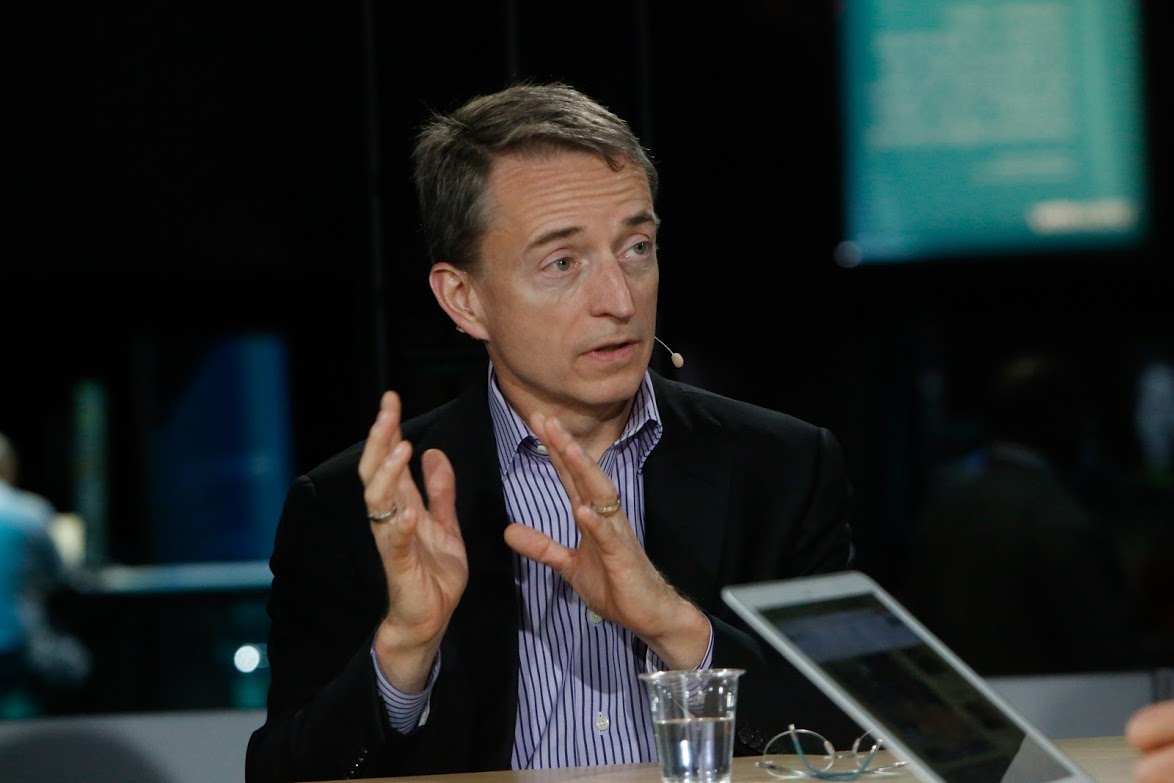 CLOUD
CLOUD
 CLOUD
CLOUD
 CLOUD
CLOUD
Updated:
VMware Inc. beat Wall Street estimates on both revenues and earnings in the first quarter, but the results weren’t quite the blowout investors have come to expect recently — and they responded with a light knuckle-wrap, sending shares down more than 3% in after-hours trading.
There was little to suggest that anything is amiss with VMware’s transition from a maker of hypervisors or virtual machines to enabler of multicloud and hybrid cloud strategies. Update: By Friday, shares fell 7.4%.
Revenues rose 12.8% over the same quarter the previous year, to $2.27 billion, narrowly beating consensus estimates of $2.25 billion. However, the growth rate was slightly smaller than the 13.5% the company logged last quarter.
Adjusted earnings of $1.32 per share were 4 cents better than consensus estimates but slightly below the average 6% earnings upside surprise the company has delivered over the previous four quarters. License revenue grew 12% to $869 million and total revenue plus the sequential change in revenue grew 25% over the previous year. VMware reaffirmed previous revenue and earnings per share guidance that it raised last November.
Analyst Patrick Moorhead of Moor Insights & Strategy called the revenue growth figure “impressive,” given that the company is engaged in a broad refocusing of its strategy toward multicloud and hybrid cloud enablement as its core hypervisor business has flattened. “It’s ironic that many pundits saw VMware as an old company, but it is now becoming the on-premises cloud company,” he said.
Forrester Research Inc. analyst Glenn O’Donnell echoed those sentiments. VMware Chief Executive Pat Gelsinger and his team “keep executing on a plan that silences its critics who say its heyday has passed,” he said. “Customers keep buying — and buying lots — from VMware.”
Gelsinger (pictured) said the company closed several deals in the quarter resulting from its new cloud partnership with Microsoft Corp. and the recently introduced VMware Cloud on Dell EMC from parent Dell Technologies Inc. “Our broad platform for hybrid and multicloud is continuing to grow, become more strategic and important,” he said, pointing to alliances with two of the top three public cloud vendors.
Analysts seized on a 23% increase in unearned revenue to $7.12 billion to ask whether licensing revenue growth is beginning to decline. Gelsinger explained that the change is the result of faster growth in sales of software-as-a-service products for hybrid and multicloud contracts, which grew 35% in the quarter.
“License bookings translate into revenue faster than SaaS bookings,” he said. “You’ll see more and more SaaS bookings come in and then the revenue will ramp.”
VMware didn’t break out results by product line but executives said its diversification strategy is paying off. License bookings of its NSX network virtualization software increased 40% and NSX was included in all 10 of its top deals in the quarter. Sales of the vSAN storage virtualization software grew 50% and the customer count for vSAN now tops 20,000. The company’s end-user computing products were included in nine of the top 10 deals in the quarter, and over half of all bookings in that category are now sold on an as-a-service basis.
“Growth is coming from the cloud partnerships, software-defined networking and vSAN, which has become a major force in the rapidly expanding hyperconverged infrastructure market,” Forrester’s O’Donnell said. “The future of technology is a seamless blend of infrastructure and applications treated as equally critical elements.”
Sales of cloud management software grew in the “strong double digits,” driven by the vRealize hybrid cloud suite and products VMware picked up with the acquisition of CloudHealth Technologies Inc.’s multicloud operations platform last summer. Gelsinger said the company’s strategy of making it simpler for customers to adopt multiple clouds is working. “The idea of not having to replatform for multiple clouds is a powerful statement,” he said.
Even containers, the portable software environments that were once seen as a significant challenge to VMware’s virtualization business are presenting new opportunities, the CEO said. Containers are a “terrible wonderful situation where the business impact is quite modest but the momentum is quite spectacular,” he said. “It’s the Java of the next two decades.” Gelsinger claimed VMware is now the second-largest contributor to the Kubernetes container orchestration project at the Cloud Native Computing Foundation.
Overall, VMware continues to defy gravity in an infrastructure market that has recently shown some signs of slowing growth. What can the company do to continue to keep up the momentum?
“More or less continue delivering the goods that it has since Gelsinger took on the CEO role,” said Charles King, principal analyst at Pund-IT Inc. “VMware has become an exemplar of a business that knows and plays to its strengths while developing new capabilities. That will likely continue to be a winning path for the company and its shareholders.”
Support our mission to keep content open and free by engaging with theCUBE community. Join theCUBE’s Alumni Trust Network, where technology leaders connect, share intelligence and create opportunities.
Founded by tech visionaries John Furrier and Dave Vellante, SiliconANGLE Media has built a dynamic ecosystem of industry-leading digital media brands that reach 15+ million elite tech professionals. Our new proprietary theCUBE AI Video Cloud is breaking ground in audience interaction, leveraging theCUBEai.com neural network to help technology companies make data-driven decisions and stay at the forefront of industry conversations.